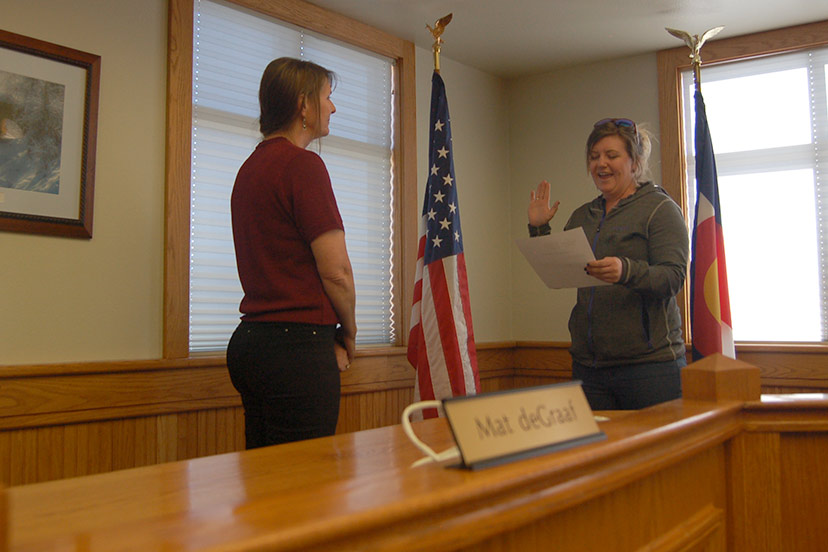We’re not saying that the Town government is ‘expecting’ a sewer system disaster within the next few months, although a review of the Pagosa Springs Sanitation General Improvement District (PSSGID) agenda for yesterday’s board meeting might you give that impression.
As I understand it, this is simply ‘planning for the worst’, which is not exactly ‘expecting the worst’.
“The worst” meaning: raw sewage flowing into the San Juan River as the result of a failing municipal sewer pipeline that starts near Pagosa Springs High School and travels uphill over a seven-mile path to the Vista Waste Water Treatment Plant. About 350,000 gallons of raw sewage per day flows through the municipal collection system, causing the massive pumps at Pump Station One and Two to fail, regularly.
The PSSGID meeting followed a regular meeting of the Town Council, during which the Council dealt mostly with procedural questions, as might be expected following the Town election on Tuesday.
Following a farewell speech and a prayer by outgoing mayor Don Volger, our new mayor, Shari Pierce was sworn in, and then posed with her extended family for a family portrait.
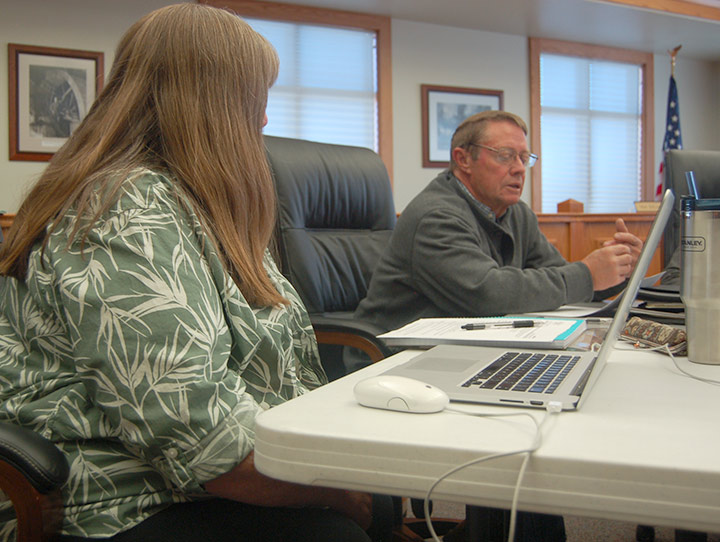
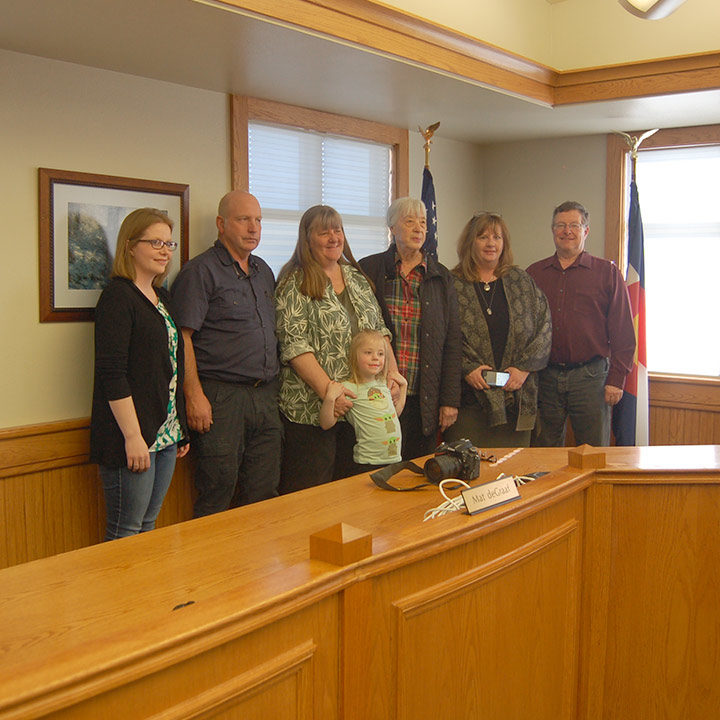
Maddie Bergon and Matt DeGuise — both re-elected to the Council — were sworn in by Town Clerk April Hessman.
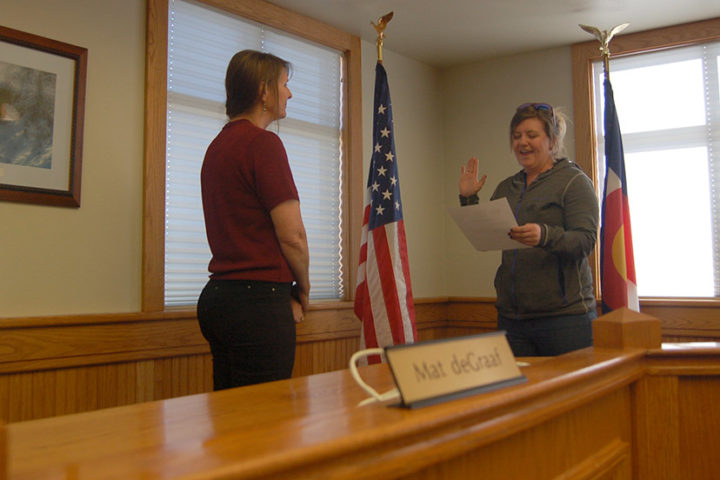
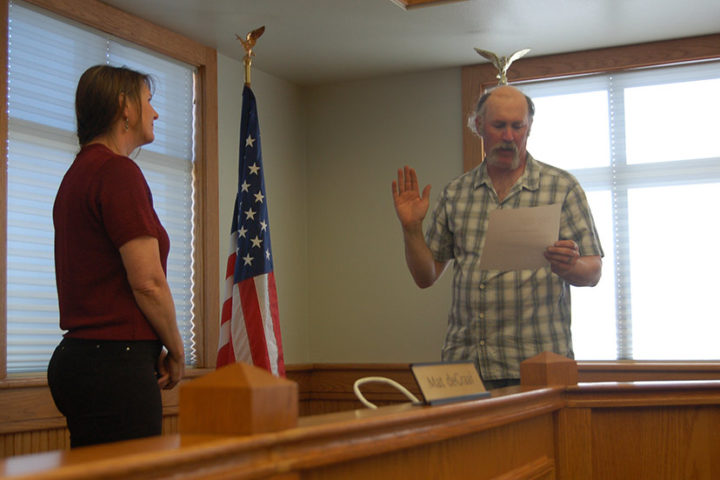
Next to swear his allegiance to public service and guiding documents was Gary Williams, brand new to the Council.
Mr. Williams also posed with family for a photo.
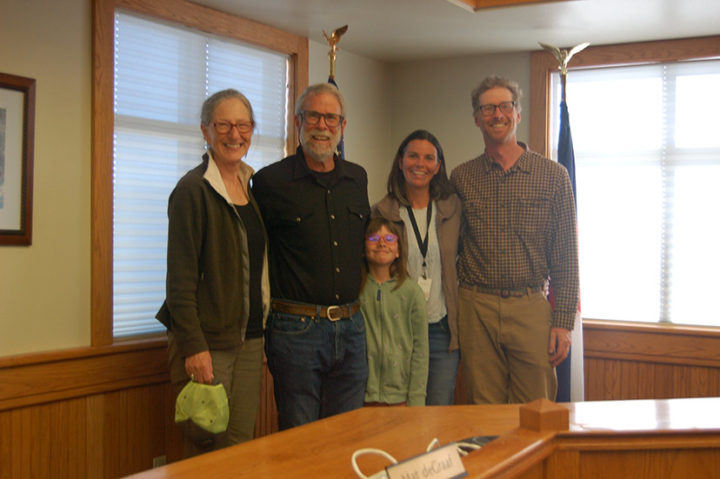
The three Council members had run unopposed, but the ‘promotion’ of Ms. Pierce from Council member to Mayor now leaves one Council seat vacant. Whoever fills that seat will have their hands full, so to speak.
As many Daily Post readers know, the Mayor and Town Council members also serve as the Board of Directors for PSSGID, a function they fulfilled last night following a relaxed and uneventful Council meeting. But the subsequent PSSGID meeting was less relaxed, as the Council and staff discussed a sewer system designed to pump 750,000 gallons of sewage per day, uphill, through a seven-mile pipeline. A system which is precariously close to failing.
There is no one currently serving on the Council who took part in the decision, in 2012, to abandon plans for a new state-of-the-art waste water plant near the High School and instead approve a seven-mile sewer pipeline to deliver sewage to the Vista Waste Water Treatment Plant, located just north of the Vista mobile home park.
But the seven people now serving on the Council are watching their municipal staff work overtime, to try and deal with a ‘unique’ sewer system.
As far as waste water is concerned, the people of Archuleta County, as a whole, are also facing some long-range challenges. The Vista treatment plant has its own problems, which we’ll discuss tomorrow in Part Two.
The Town government and the PSSGID customers are up against an immediate emergency situation, and also face what now appears to be a long-term problem. Up until 2016, PSSGID operated its own sewer treatment lagoons, but the Colorado Department of Public Health and Environment determined that sewer lagoons, in general, were contributing to certain types of water pollution. Here in Pagosa, the pollution typically took the form of excess ammonia.
The solution appeared to be an expensive ‘sequencing batch plant’… similar to the Vista treatment plant which is operated by a separate government entity, Pagosa Area Water and Sanitation District (PAWSD). Then someone had the bright idea to pump the PSSGID waste uphill to the PAWSD plant, which was operating — we were told — at one-quarter capacity.
The community leaders who made the decision to build a seven-mile pipeline thought they were doing the right thing, back in 2012, when PSSGID and PAWSD signed an intergovernmental agreement. But since the pipeline came online in 2016, it has slowly become apparent that those leaders may have made a big mistake. A big, expensive mistake.
Looking at the community’s long-range challenges and doing some ‘outside the box’ thinking, we all need to come up with some long-range solutions. More about that tomorrow.
But PSSGID needs to address the emergency situation.
From the agenda for yesterday’s PSSGID meeting:
2) Emergency Overflow Storage in Old Lagoons: Staff is working with a firm in SW Colorado to price preparation and lining of two depressed areas by PS 1 for emergency storage, should a total pump failure occur. With staff doing much of the dirt work for the lower pond, this will reduce costs. However, estimates are up to $75k to bring in sand and have the lagoons lined. This will help store wastewater for up to two weeks if needed, which will help avoid a spill into the San Juan River.
3) Bypass Valve: The Town would like to install bypass valves on the mains at PS 1 and 2. Costs are TBD but should be no more than $5k-$10k…
RECOMMENDATIONS:
1. Authorize the expenditure of up to $100,000 from the Sanitation Fund reserves for the emergency purposes indicated herein.
The agenda packet also provided this map. The two failing pump stations are circled in green (Pump Station 1) and blue (Pump Station 2):
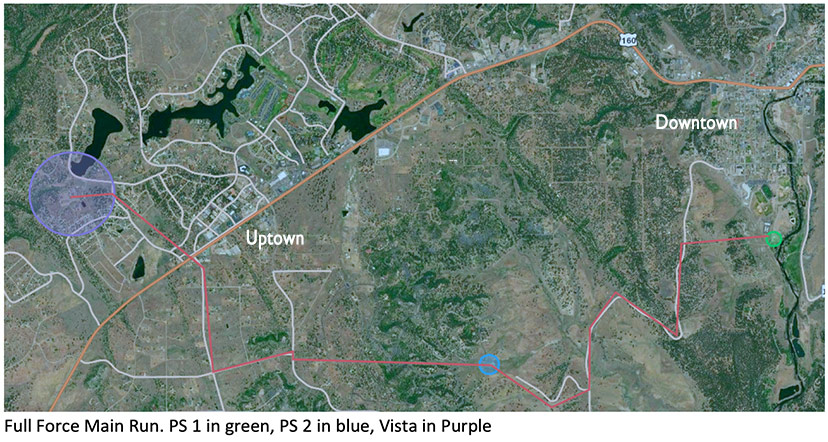
More from the agenda for yesterday’s PSSGID meeting:
During all phases, the Management Team will be needed to aid the other teams and manage aspects of the emergency that are outside of pumping operations and communications.
Finance (April and Kate):
- Create a spreadsheet to track expenditures related to the emergency (supplier, item purchased, date of purchase, amount, tracking number for budget line item). April may want to create a distinct identifier/line item for tracking. Everyone should give receipts in hard copy or emailed to April.
- Keep regular ordering of supplies such as food for the Operations Team. Work with Debbie Allen or other staff to have food delivered and available at PS #1 and/or Town Maintenance Facility at 550 S. 5th St.
- Work with Auditor on possible loan from Town General Fund to GID. Bring document for Council adoption at special or regular meeting as needed.
Police Department (Chief Rockensock):
- Provide security assistance at pump station/GID property. May need to establish a perimeter to keep public, media and others out of the area. Depending on the phase of the emergency and the public response, people may go the area to check it out or for news reporting. They could disrupt the operations team and police assistance may be needed to secure the area for safety purposes.
Administration/Town Council
- Hold Special Meetings as necessary to adopt Emergency Declaration (at Stage One) and to ratify any emergency expenditures.
- Consider loan arrangement from General Fund (see above), if needed.
- Assist in community communications as needed.

